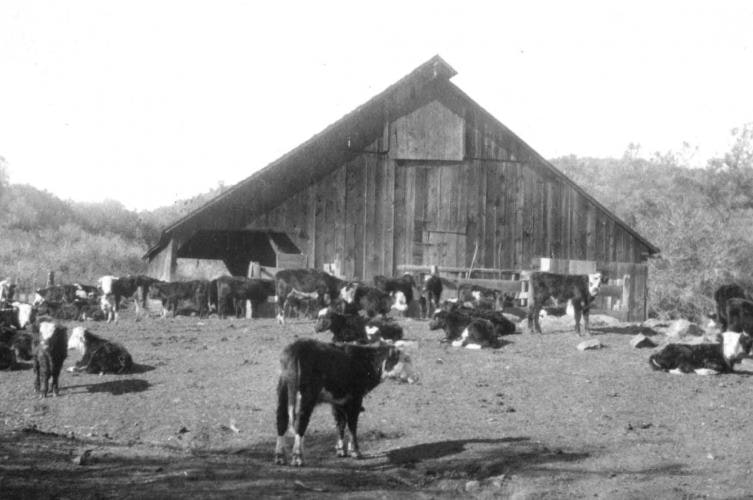Calaveras Agriculture

Close behind the prospectors and miners came the agriculturalists, families from the eastern states and Europe who saw opportunities for stock-raising and truck garden operations on the open grasslands. Following the decline of placer deposits in the Mother Lode after ca. 1860, ranching became more important to the foothill economy. Settlers established farms in the area where they grew hay, alfalfa, and wheat and planted orchards. Most families practiced a mixed agricultural economy, raising cattle, sheep, hogs, and poultry, which supplied them with a steady supply of foodstuffs augmented by vegetable gardens and orchards.
Livestock, however, has always provided the backbone of the agricultural industry, with the practice of transhumance opening up the high country to cow and sheep camps. Upland grazing of cattle, sheep, and goats was an important early historical land use, beginning as early as 1849, with livestock herds annually moved to the mountains during the hot summers, returning to the valleys below before winter. Most of the geographic names in the high country were derived from the summer pasturing of the foothill ranching families, i.e. Tryon Peak, Hiram Meadow, Adams Camp, Wheat’s Meadow, and many others.

Some families established vineyards and produced wines and brandies for personal use and for sale, while others bottled the clear, fresh waters of local springs and sold them commercially. Hops were grown and baked in kilns for breweries that produced local beers and ales. Olive trees were planted and the olives cured or made into oil, in both family and commercial orchards. Commercial winemaking began in 1851, with 1,000 vines set out on the Calaveras River. Mokelumne Hill was another center of wine production, but vineyards were also planted in virtually every community in the early years.
Nineteenth-century impetus for agricultural development came from disenchanted county boosters who blamed mining for Calaveras’ socioeconomic problems and perceived farming as a panacea. A host of problems plagued the county’s agricultural development, not the least of which was the public perception of the foothills as mining territory incapable of fostering anything better than infertile “bedrock ranches.” Local farming never developed beyond a subsistence level and gradually gave way to livestock operations. As the mining economy declined, however, farming gained importance as a family enterprise which helped to establish more permanence and stability in the society.
